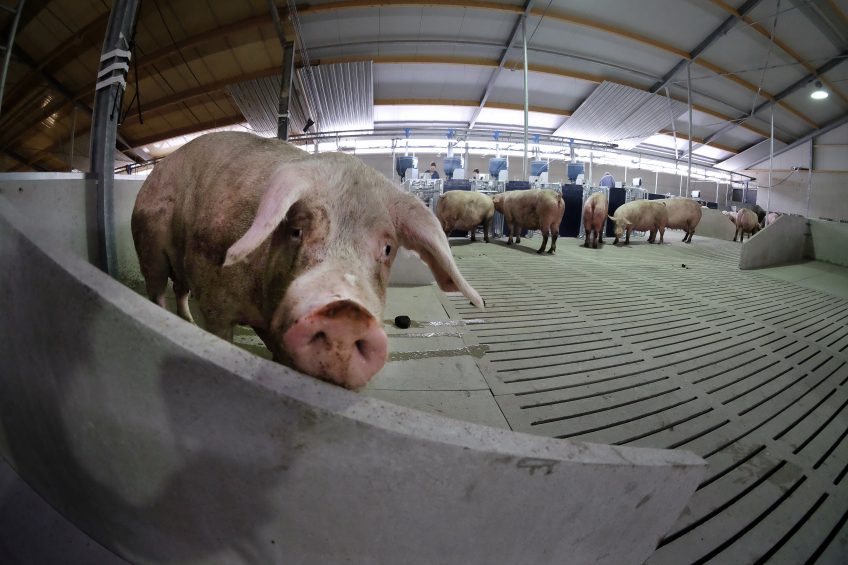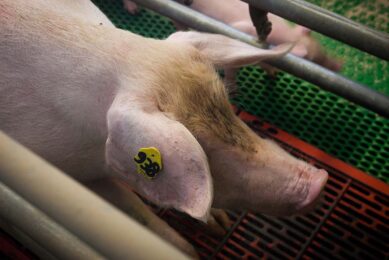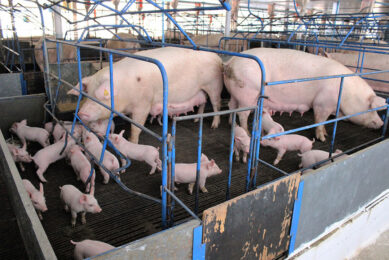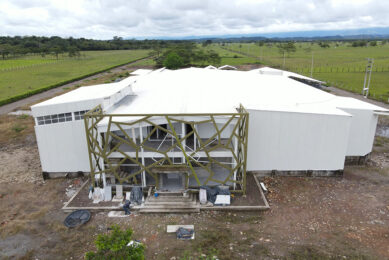Maintaining sow performance in group housing

Maintaining reproductive performance in gestating sows often boils down to social rank and feed intake.
That is the message by Dr Janeen Salak-Johnson, associate professor and animal welfare expert at the University of Illinois, USA, in a recent contribution to the scientific journal Molecular Reproduction and Development.
In her article, Dr Salak-Johnson examined the effects of group housing on reproductive success for pregnant sows in the context of stress, touching on competitive versus non-competitive feeding systems, group size, floor space, and social rank.
Concerns about reproductive performance
“Reproductive performance has always been a metric that people have been concerned about with housing,” said Dr Salak-Johnson in a university press release.
Most previous research suggests reproductive performance is approximately equal in group housing versus individual stalls. Nevertheless, according to the press release, producers notice compromised reproduction in group pens. Most sows are put into group housing after pregnancy is confirmed, so the effects of the transition usually manifest in low birthweight piglets or fewer piglets, rather than an impaired ability to become pregnant or stay pregnant.
Potential effects on the litter
In the press release, Dr Salak-Johnson said, “That’s one of the big reasons people don’t see effects of group housing on reproductive success – the sows are already pregnant. But that doesn’t mean there aren’t potential effects on the litter during the course of the pregnancy.”

Last year, Pig Progress interviewed Dr Salak-Johnson. Read the entire interview here
Differences in design, size, feeding system, and number of animals in group pens may have a huge impact on stress levels – and therefore reproductive performance – but no one has successfully identified the factors that have the biggest impact, the university press release stated.
When is aggression strongest?
The press release stated that aggression is strongest when animals are first mixed into groups and during feeding, especially if competitive feeding systems such as floor feeding are used.
In the article, Dr Salak-Johnson is quoted saying, “If dominant sows are not able to assert their dominance during feeding by displacing submissive individuals, they get frustrated. That can lead to low birthweight piglets. Short feeding stalls offer some level of protection, but also allow dominant sows to exhibit normal behaviour.”
Wide variation in group housing designs
Dr Salak-Johnson’s article concluded that the wide variation in group housing designs makes it difficult to provide research-backed recommendations for producers.
She said, “Maybe we start grouping them by body weight, parity, or speed of feed intake. Heavier sows eat much faster. Maybe put them all together. You’re still going to have a dominant sow and a submissive sow, but if you bring your composite groups closer together, I think you have an opportunity to do a better job in reducing this variation that occurs in group housing.”
Currently in the United States, 11 states and several large pork producers are in the process of moving away from sow stalls. In the Europe Union, sow stalls have been banned since 2013. This week, also Thai agribusiness Betagro chose to move away from using sow stalls.
The article, Social status and housing factors affect reproductive performance of pregnant sows in groups, was published in Molecular Reproduction and Development.











